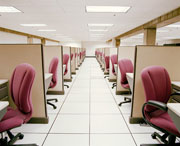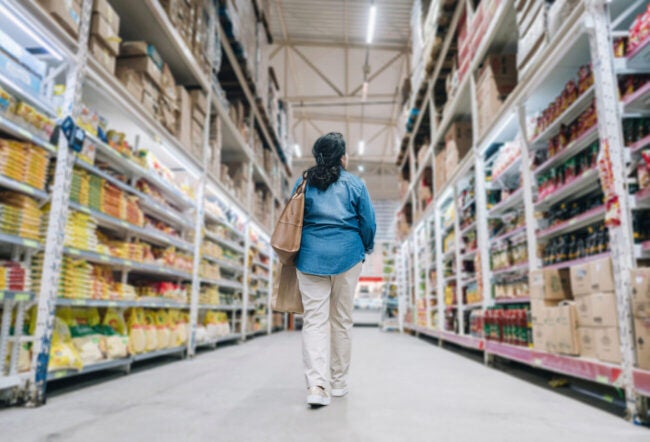Wall Street has just seen a two-month rally that included a whopping 39% rise from the recent rock-bottom prices on the Standard & Poor’s 500. In addition, during several consecutive weeks, new U.S. jobless claims have dropped. Even quarterly reports from the battered banking sector have given investors some optimism that the worst-case scenarios will not happen.
Is the Economic Recovery Real? Expert Opinions from Wharton
So does that mean the band can strike up “Happy Days Are Here Again” to herald the arrival of an economic recovery, and the end of America’s longest recession — now 18 months and counting — since the Great Depression of the 1930s? Most financial experts at Wharton and elsewhere insist that the much-talked about recovery is not here yet, despite some of the first hopeful data in months — and they remain concerned that the recovery will be weaker and take longer to gain momentum than past slowdowns.
Why the Economic Recovery May Be Slow
“Things are still looking far from great, but they’re also looking not nearly as dismal as they did back in November, December and January,” says Francis X. Diebold, co-director of the Wharton Financial Institutions Center, who recently promulgated a new statistical tool for tracking economic recovery and decline. Diebold notes the U.S. could be in full recovery mode by the fourth quarter of this year if the current trend lines continue — but even he concedes that is a large “if.”
The Federal Reserve’s Insights on Economic Conditions and Recovery
Indeed, a June 10 “Beige Book” report from the Federal Reserve Board said that economic conditions remained weak during mid-April through May. Conditions deteriorated in many regions of the country, the survey found, as commercial real estate and labor markets continued to struggle.
When Will Consumer Confidence and Spending Return to Normal?
But if the recent mini-surge in the stock market isn’t definitive proof of a recovery, is there any way for the hard-hit classes — such as investors, consumers, home buyers — to know for certain that it is the right time to resume aggressive spending? And when this recovery comes, will it be an across-the-board bounce-back — or will some of the more hard-hit sectors like banks, U.S. automakers and the media continue to suffer for years to come, in a kind of industry-targeted Great Depression?
Structural Challenges Hindering Economic Recovery
Several Wharton experts express fairly pessimistic views about the recovery — predicting that positive growth may not be here yet, and that even when it does arrive, it will probably take several years for employment rates to return to so-called normal levels. Even if the U.S. gross domestic product turns positive by the end of 2009, they note, the American economy will remain close to the bottom of the large trough that began in late 2007, with a long way to climb for jobs, home prices and other key economic indicators just to get back to where they were.
“Many of the underlying problems remain — and we still haven’t seen the worst in terms of consumer problems,” says Mauro Guillen, Wharton professor of international management and sociology and director of the Lauder Institute at Penn. He lists some of these problems as ongoing mortgage woes for U.S. homeowners — highlighted by the latest statistics showing about 12% are behind on their mortgages or in foreclosure — as well as a deepening crisis in consumer credit card debt, looming troubles for commercial real estate, and the ongoing issue of so-called “toxic assets” on the books of larger banks, which may continue to impede their ability to make the loans that would spur a recovery.
Franklin Allen, a finance professor at Wharton and co-director of the Wharton Financial Institutions Center, has taken a fairly negative view throughout the current crisis. He argued earlier this year that some large U.S. banks might have to be nationalized before any serious economic rebound could begin. So, it should not come as a surprise that Allen does not now believe that recovery is at hand, or that it will be widespread.
The Role of Job Market in Economic Recovery
Long-term Unemployment
“I think this [financial crisis] will be a watershed event that will change many things going forward,” Allen says. He is especially concerned about the issue of structural joblessness; the U.S. Bureau of Labor Statistics recently reported that some 27% of the nation’s 12.5 million unemployed workers have been without a job for more than six months, a record-high rate. “The real problem is that long-term unemployment is going up dramatically,” Allen says. “Unfortunately, many people in their late forties and early fifties may never get jobs again.”
The problem, according to Allen’s perspective, is that some sectors of the economy face large structural obstacles for regaining jobs even when the leading economic indicators turn positive. This is particularly true in industries that are losing out to newer technologies — such as America’s hard-hit newspapers — or manufacturing, the sector where the job losses have been heaviest since 2007.
Allen predicts that “the auto sector will shrink substantially — fewer workers, fewer dealers at least for the domestic auto companies. There is likely to be an expansion of Toyota and Honda production in the U.S. which may offset this to some extent.”
More broadly, Allen believes that the housing and other property markets must show signs of stabilization before the economic recovery can truly be considered underway. He says the recent surge on Wall Street should not be ignored but that the rally seems to be a bit “short-sighted.”
Unemployment Rates
One indicator that economists find problematic is unemployment. The U.S. jobless rate for May has reached 9.4%, the highest in a generation, and experts say that hiring typically lags well behind the earliest rumblings of a recovery, such as an increase in consumer confidence. That is because some companies are still reluctant to lay off people during the depths of the downturn — retaining what Wharton professor of finance Nicholas Souleles calls an “overhang” of extra employees.
“Some firms still have this overhang, so they might be slow to add new workers — especially if they’re uncertain what the strength of the economic recovery might be,” Souleles says. Edmund Phelps, a Nobel Prize-winning economist at Columbia University, recently predicted that the so-called “natural unemployment rate,” which has been about 5.5%, could rise to 6.5% or even 7% in the wake of the meltdown.
The Influence of Consumer Behavior on Economic Recovery
Personal Debt
In addition to lagging joblessness, economists say the nature of this credit crunch appears to have brought on a sea change in the core habits of American consumer, whose spending — fueled by an increase in credit card and home equity debt — has driven an increasingly large proportion of U.S. economic growth since the 1980s. Now, many Americans are cutting back on debt and building up their savings accounts, if they can. The personal savings rate, which averaged 0.9% from 2004 through 2007, has climbed to 4.2%.
Savings Rates
“The savings rate has been driven down so low, because people have been able to borrow against their houses, or they have a lot of stock appreciation, and people didn’t need to do as much in the savings department,” Guillen says. “Now they are acknowledging that these have reversed.” However, the problem with the virtue of savings is that the reduced consumer spending that comes with it can put downward pressure on economic output and growth, which continues to slow the pace of new hiring.
Economists Debate: When Will the Economic Recovery Begin?
Despite these worrisome trends, some economists — even those who predicted financial gloom a couple of years ago — are seeing a few early signs of optimism. A recent survey of 45 professional forecasters released by the National Association of Business Economists showed that three-quarters of them predicted that the economic recovery would be underway by the late summer or early fall, and none expects the recession to last later than the early months of 2010. Princeton’s economist and recent Nobel laureate Paul Krugman says the world economy “averted utter catastrophe” but that the road to recovery will be slow and laced with lingering pain.
Nouriel Roubini, the New York University economist some called “Dr. Doom” because of his earlier forecasts, cautioned recently that that there is “too much optimism,” and that lingering issues with credit and housing will weaken the recovery when it does occur.
Tracking Economic Recovery Via the Aruoba-Diebold-Scotti Index
The difficulty in finding a simpler formula to track overall economic performance is what drove Wharton’s Diebold and his colleagues to develop what they call the Aruoba-Diebold-Scotti business conditions index. It seeks to use a blend of statistics — weekly initial jobless claims, monthly payrolls, industrial production, personal income data, manufacturing and trade sales; and quarterly real GDP figures, as well as stock prices and other volatile financial data — to provide economists with a snapshot of where the economy is in real time.
What the index shows for the last 18 months is that a bottom has been reached twice so far — once in September of 2008 (although Diebold says the number was skewed somewhat by seasonal job losses from hurricanes) and again this January. Since then, the index is on a sharp upward trend, although there is still a long way before the index reaches positive territory, which would signal a sustained recovery.
Diebold says that “just eyeballing [the index], it might look like by the end of the year, maybe November or December,” that the index will cross into positive territory. The problem, of course, is that economic activity rarely moves in a straight line; for example, investors were just recently dismayed when U.S. retail sales did not hold their gains from late winter and early spring. Diebold says it’s quite possible the positive economic trends could “shift into neutral” for a time, pushing back the recovery until 2010.
Interest Rates and Their Effect on Economic Recovery
One issue that economists have been worrying about recently is whether interest rates will rise — in response to rising government debt to finance economic stimulus programs, bank bailouts and general overspending — and how much that might hamper the recovery before it gets very far off the ground. The yield on U.S. government bonds rose to the highest levels in six months near the end of May, largely driven by worries over government borrowing.
“There will be difficulties in getting a triumphant return to 4% or 5% rate of growth in the GDP with low inflation — that will be hard because the banks cannot lend and it will be hard because the government will ultimately raise interest rates because of inflation,” Guillen says. And he is very concerned that a sharp rise in interest rates will clip the wings of the incipient recovery before it takes flight.
The Outsized Impact of Consumer Confidence on Economic Recovery
Of course, the ongoing signs of economic distress and gloomy forecasts from economists create another problem, which is that the real recovery cannot happen unless both rank-and-file consumers and business executives regain confidence to spend money again. Indeed, consumer confidence did rise sharply in May: The Conference Board says its index jumped to 54.9 from 40.8 in April. Experts say that both confidence and gloom about the economy among consumers will affect spending habits.
Sigal Barsade, a professor of management at Wharton, is a leader in research on social contagion. Just as her work has shown that people who are surrounded by smiling, cheerful people become happier themselves, she says that optimism about the economy, from the workplace to the mall, can also be contagious. Barsade notes that researchers have even found that the mere sight of an active infrastructure construction project — such as the kind that are now beginning under the $787 billion economic stimulus plan enacted by President Barack Obama — can cause consumers to become more optimistic and thus more willing to spend money themselves.
“I think people can only spend so much time feeling despair and this is where the emotional part comes in,” Barsade says. “We’re motivated to go from pain to pleasure.”
The problem, according to some economic experts, is that while consumers and business leaders are anxious for any hopeful signs of a recovery, the upbeat psychology will not last if banks are not lending money or if consumers continue their recent focus on paying down debts and saving rather than on shopping. Wharton faculty say that economic downturns that are triggered not by the conventional business cycle but by a financial crisis — as was also the case in the Great Depression of the 1930s — tend to have much slower and more shallow recoveries. Guillen argues that the nature of the banking crisis — with the billions of dollars lost or tied up in mortgage-backed securities and other troubled assets — makes this recession fairly unique.
“In the last 70 years, we’ve had seven recessions — but none of them came this way, with the kind of Third World banking that used to happen in Latin America or in Asia,” Guillen says bluntly. “We have a financial system that is very sick because of the decisions that were made, that consumers went along with and China went along with. That makes it a difficult situation to fix.”
Long-term Outlook: The Road to Economic Recovery
Most economic experts stress that the recovery — regardless of whether it begins by the end of this summer or is deferred until early next year — is merely the start of a very long process to return employment, housing prices and other indicators of economic health back to 2007 levels, and then beyond.
“GDP growth is measured quarter to quarter,” Souleles says. “If there is growth, we will still be well below where we were when the recession started. And we will probably be below that trend line for a long time.”



